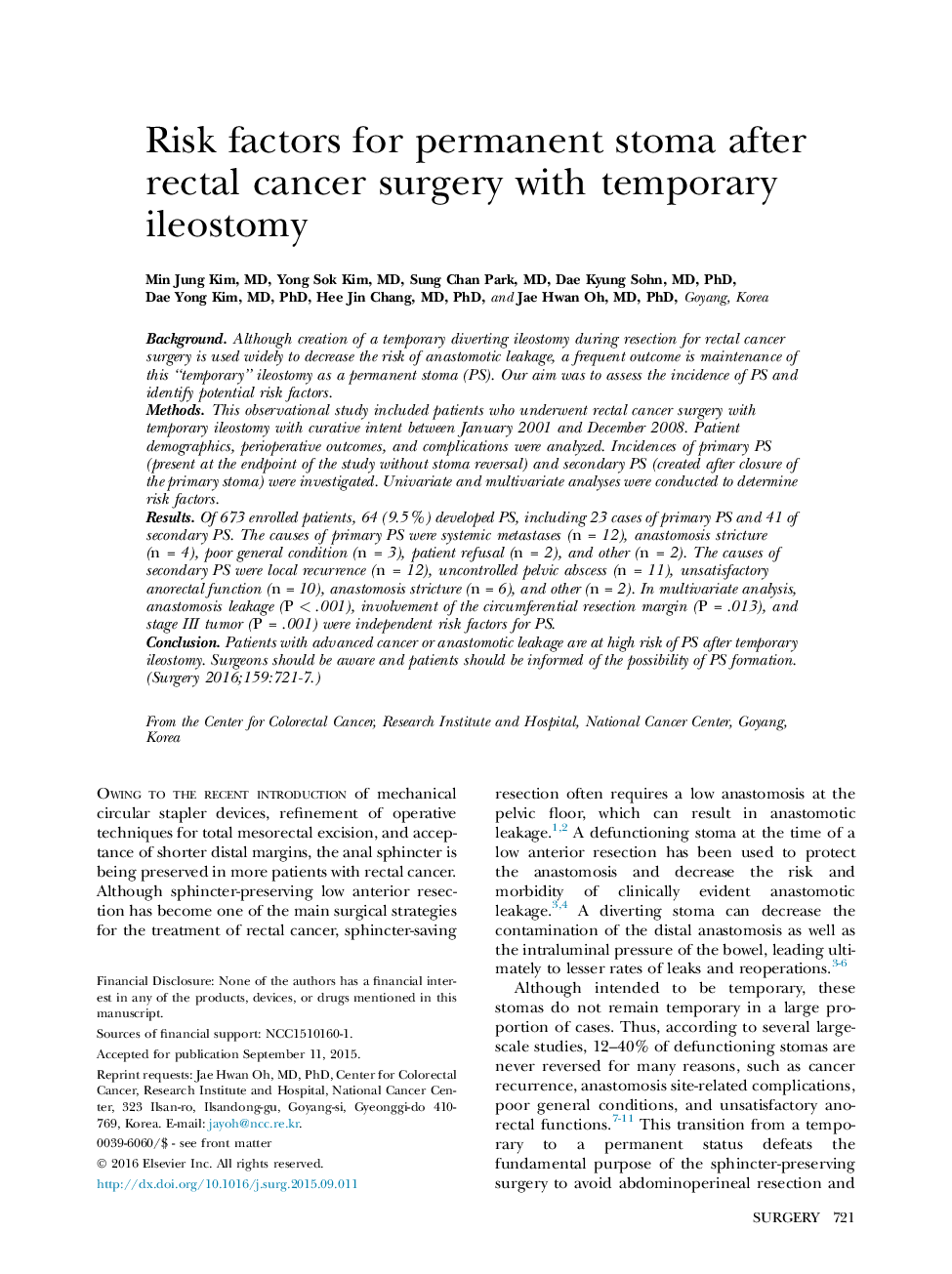| Article ID | Journal | Published Year | Pages | File Type |
|---|---|---|---|---|
| 4306802 | Surgery | 2016 | 7 Pages |
BackgroundAlthough creation of a temporary diverting ileostomy during resection for rectal cancer surgery is used widely to decrease the risk of anastomotic leakage, a frequent outcome is maintenance of this “temporary” ileostomy as a permanent stoma (PS). Our aim was to assess the incidence of PS and identify potential risk factors.MethodsThis observational study included patients who underwent rectal cancer surgery with temporary ileostomy with curative intent between January 2001 and December 2008. Patient demographics, perioperative outcomes, and complications were analyzed. Incidences of primary PS (present at the endpoint of the study without stoma reversal) and secondary PS (created after closure of the primary stoma) were investigated. Univariate and multivariate analyses were conducted to determine risk factors.ResultsOf 673 enrolled patients, 64 (9.5%) developed PS, including 23 cases of primary PS and 41 of secondary PS. The causes of primary PS were systemic metastases (n = 12), anastomosis stricture (n = 4), poor general condition (n = 3), patient refusal (n = 2), and other (n = 2). The causes of secondary PS were local recurrence (n = 12), uncontrolled pelvic abscess (n = 11), unsatisfactory anorectal function (n = 10), anastomosis stricture (n = 6), and other (n = 2). In multivariate analysis, anastomosis leakage (P < .001), involvement of the circumferential resection margin (P = .013), and stage III tumor (P = .001) were independent risk factors for PS.ConclusionPatients with advanced cancer or anastomotic leakage are at high risk of PS after temporary ileostomy. Surgeons should be aware and patients should be informed of the possibility of PS formation.
